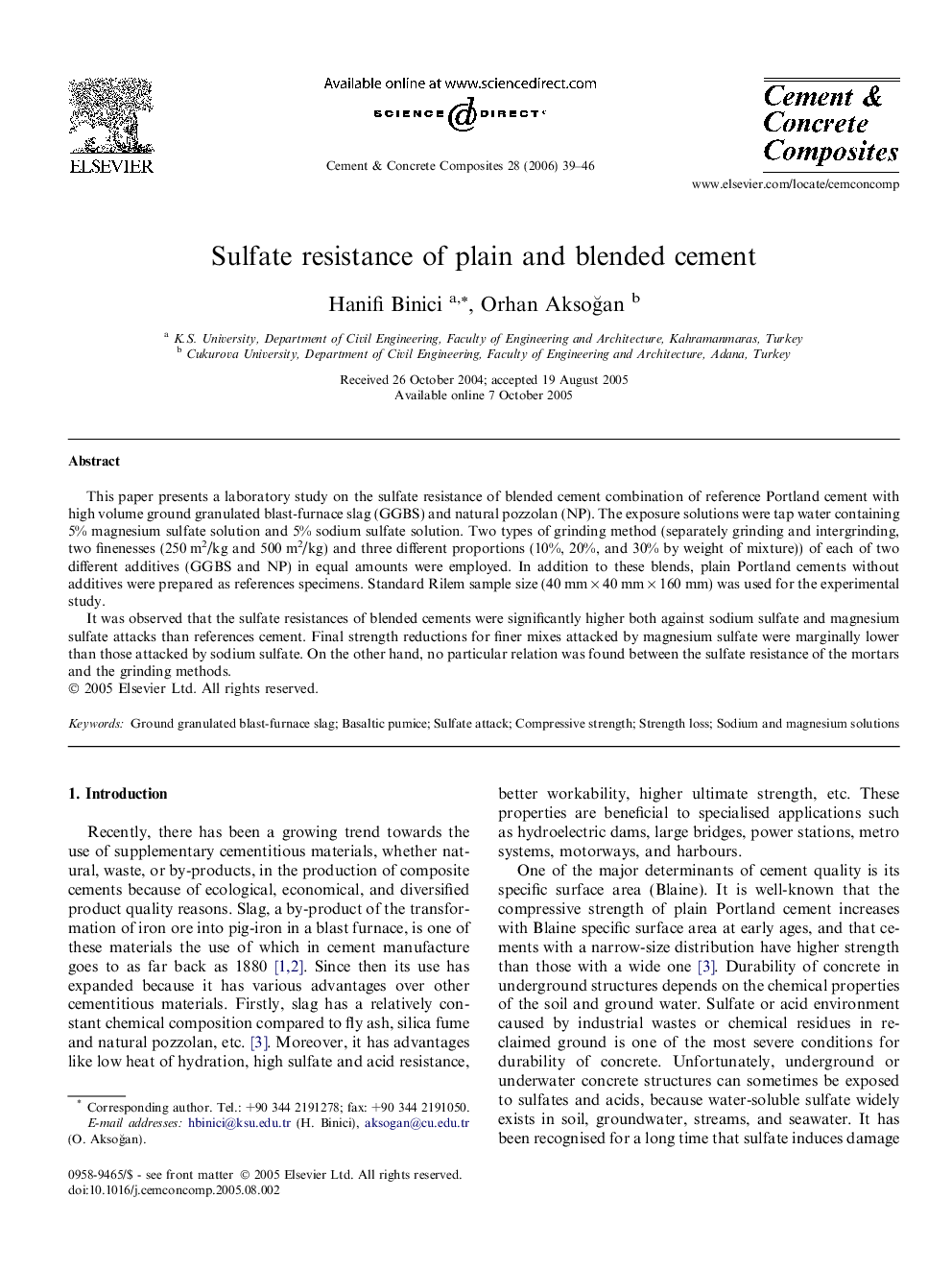| Article ID | Journal | Published Year | Pages | File Type |
|---|---|---|---|---|
| 1455903 | Cement and Concrete Composites | 2006 | 8 Pages |
This paper presents a laboratory study on the sulfate resistance of blended cement combination of reference Portland cement with high volume ground granulated blast-furnace slag (GGBS) and natural pozzolan (NP). The exposure solutions were tap water containing 5% magnesium sulfate solution and 5% sodium sulfate solution. Two types of grinding method (separately grinding and intergrinding, two finenesses (250 m2/kg and 500 m2/kg) and three different proportions (10%, 20%, and 30% by weight of mixture)) of each of two different additives (GGBS and NP) in equal amounts were employed. In addition to these blends, plain Portland cements without additives were prepared as references specimens. Standard Rilem sample size (40 mm × 40 mm × 160 mm) was used for the experimental study.It was observed that the sulfate resistances of blended cements were significantly higher both against sodium sulfate and magnesium sulfate attacks than references cement. Final strength reductions for finer mixes attacked by magnesium sulfate were marginally lower than those attacked by sodium sulfate. On the other hand, no particular relation was found between the sulfate resistance of the mortars and the grinding methods.
